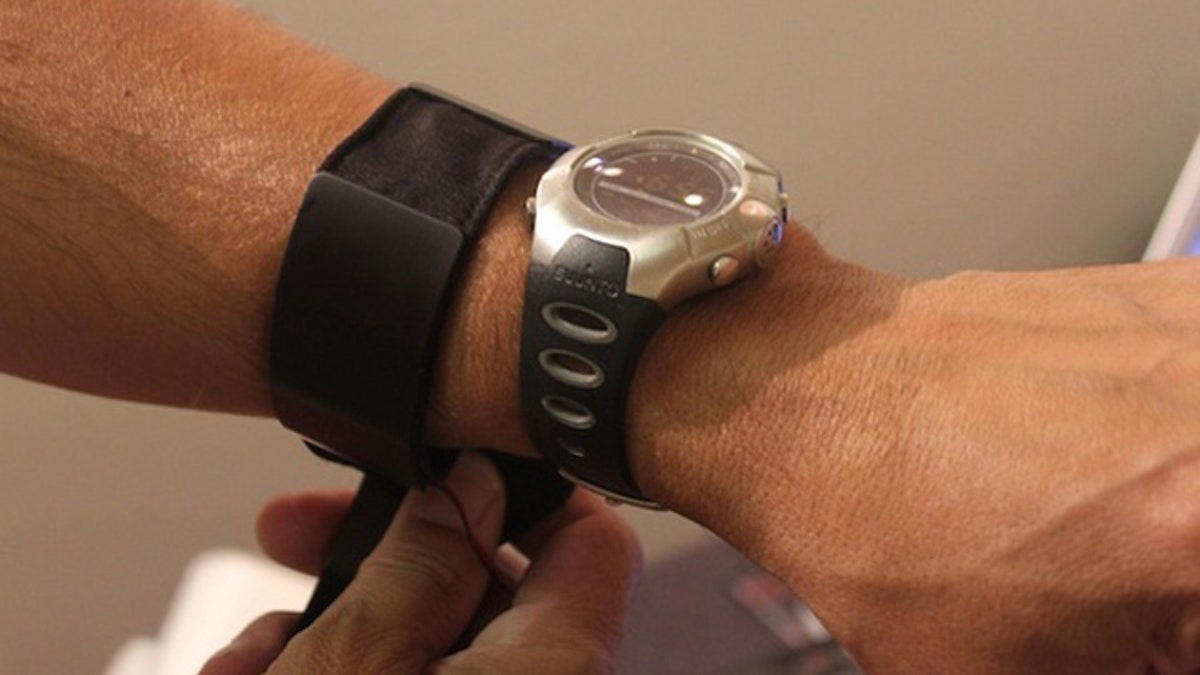
A makeshift armband will one day become a wrist strap that could power this watch. (Sean Captain)
This week at a technology show in New York City brimming with colorful gadgets, Jerry Wiant of Perpetua stood over a table with a few black armbands and an old quartz watch.
But Perpetua (a developer of green power sources for wireless sensors where Wiant is vice president of marketing) wasn't there to show cool devices. The company was showing a new way of powering gadgets using simply a person's own body heat.
It's not, strictly speaking, a new way. The technology is based on a principle discovered nearly 200 years ago by physicist Thomas Johann Seebeck, who found that a combination of materials, when warmer on one side and colder on another, produces electricity.
Current heat wave notwithstanding, the human body's temperature of around 98.6 degrees Fahrenheit is usually hotter than the air around it. So Perpetua has developed an armband, soon to become a wristband, that produces enough power for small electronics — not smartphones, but items that connect to them, such as Bluetooth devices. Wearing a mock-up wristband connected to a meter, Wiant put out enough body heat for a consistent 3 to 4 volts. Headsets using a technology called Bluetooth Low Energy need only about 2 volts, he said.
What else uses that level of power? A traditional watch does, he said, as do medical and fitness devices such as heart monitors.
Perpetua's first products are for the U.S. government. The Department of Homeland Security's Science & Technology division, for example, is funding a power-conducting jacket to monitor the health and safety of first responders — with sensors for heart rate, breathing rate and levels of pollutants such as carbon monoxide, for example.
But Perpetua is also aiming for consumer products — for example, a watch with a wrist strap that also doubles as a wirelss power source. By early 2013, the company hopes to have prototypes that companies such as makers of watches and heart monitors can start experimenting with.




















